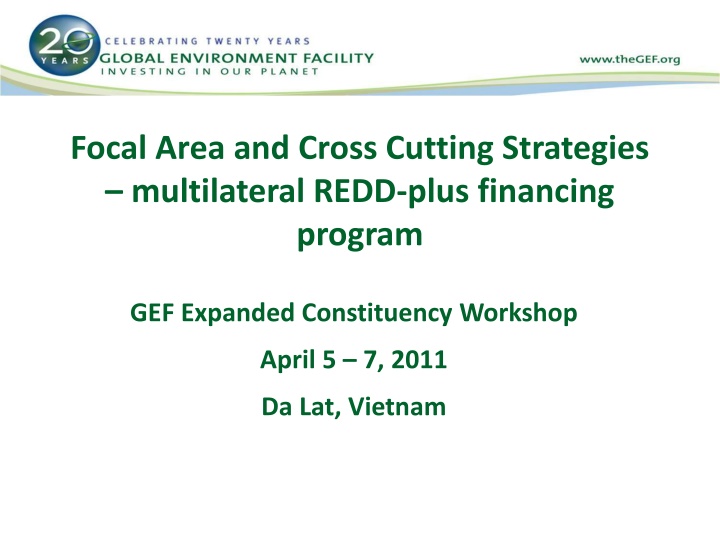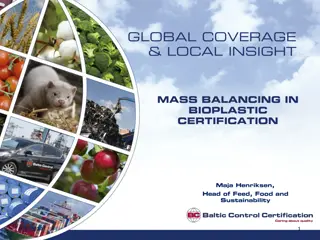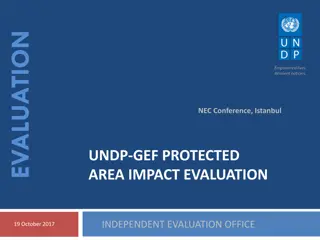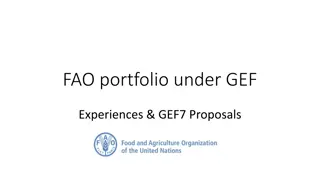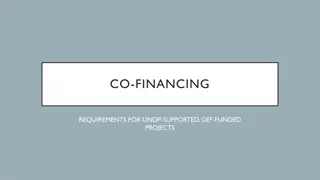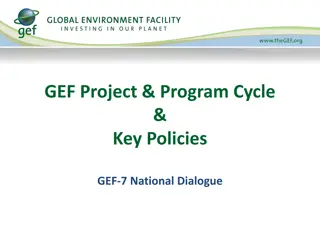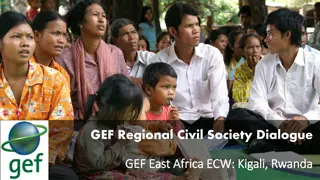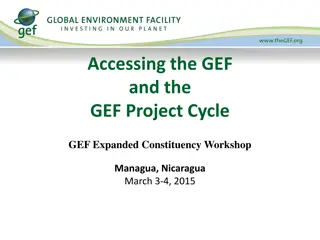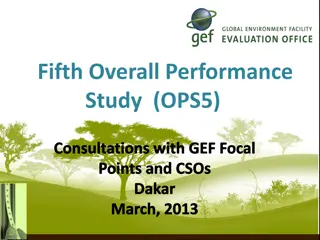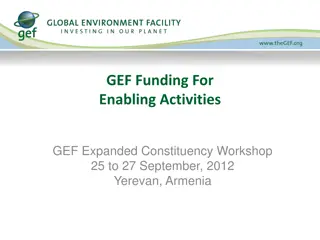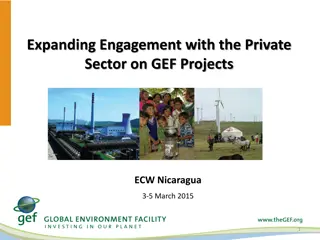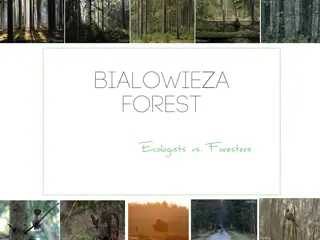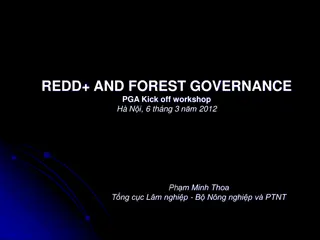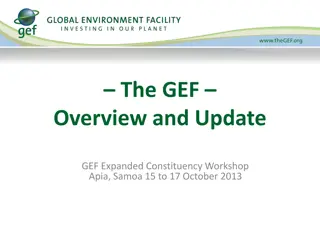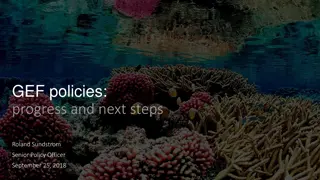GEF Forest Investments and Sustainability Strategies
The Global Environment Facility (GEF) focuses on financing forest projects to address climate change, biodiversity conservation, and land degradation. With a history of investing in forests since 1991, GEF has created programs like GEF-5 SFM/REDD-plus to generate multiple environmental and social benefits. By emphasizing sustainable forest management and reducing pressure on forest resources, GEF aims to promote resilience and ecosystem services. Various forest projects under GEF-4 have targeted biodiversity conservation and the importance of tropical forests. The objective is to develop policies, legal frameworks, and technologies that support sustainable forestry while considering community involvement and economic valuation tools.
Download Presentation

Please find below an Image/Link to download the presentation.
The content on the website is provided AS IS for your information and personal use only. It may not be sold, licensed, or shared on other websites without obtaining consent from the author.If you encounter any issues during the download, it is possible that the publisher has removed the file from their server.
You are allowed to download the files provided on this website for personal or commercial use, subject to the condition that they are used lawfully. All files are the property of their respective owners.
The content on the website is provided AS IS for your information and personal use only. It may not be sold, licensed, or shared on other websites without obtaining consent from the author.
E N D
Presentation Transcript
Focal Area and Cross Cutting Strategies multilateral REDD-plus financing program GEF Expanded Constituency Workshop April 5 7, 2011 Da Lat, Vietnam
The GEF-5 SFM/REDD-plus Program Creating multiple environmental and social benefits through financing forests
Why are forests important for GEF? Forests deliver multiple environmental and social benefits: hp_guinean_forests CLIMATE CHANGE : Slowing tropical deforestation is bound to play a much larger role in mitigating climate change. BIODIVERSITY: Forests harbor over 60% of all terrestrial plant and animal species. LAND DEGRADATION: Forests provide livelihoods and vital environmental services to hundreds of millions of people.
Prior GEF investments in forests The GEF has been funding forest projects since its inception in 1991. Forests/Forest management is not a focal area. Until 2006, GEF support for forests was therefore mainly provided through the biodiversity and land degradation focal areas. In June 2007, the GEF-4 SFM Program was created, better known as the Tropical Forest Account (TFA). The TFA reserved funds from the Biodiversity, Climate Change, and Land Degradation focal areas for SFM operations in the three major tropical forest blocks (Amazonia, Congo Basin, New Guinea/Borneo). In total, > $400 million were invested in forests in GEF-4.
Type of forest projects under GEF-4 Under GEF-4, investments in forests were mainly single-focal area biodiversity conservation projects, thus not emphasizing the potential multiple benefits. 5% LD $46 m Single Focal Area 20% CC $59 m MFA (2 Focal Areas) MFA (3 Focal Areas) BD $322 m 75%
Objective 1: Reduce pressure on forest resources and generate sustainable flows of forest ecosystem services Potential projects: Forest policy, legal and regulatory framework (re)formulation; Forest law enforcement and government (FLEG); Sustainable harvesting technologies for timber and non-timber products, forest function and management planning; Forest certification and verification of timber supply chains; Integrated forest fire management; Conflict resolution approaches (e.g. disputed forest tenure and use); Capacity building/Piloting of Payment for Ecosystem Services, economic valuation tools. Industrial, agricultural and domestic technologies reducing the pressure on forest (energy efficiency, fuel substitution); Increasing ecological connectivity at landscape level; Community and small-holder forestry
Objective 2: Strengthen the enabling environment to reduce GHG emissions from deforestation and forest degradation (REDD+) Potential projects: Competition for land use and land-use changes (e.g. land use potential and related planning activities; trade-off analysis); Building of technical and institutional capacities to monitor and reduce GHG emissions from deforestation and forest degradation; Testing and adopting approaches that allow for the generation of revenues from the carbon market.
GEF-5 SFM/REDD-plus Program Goal: achieve multiple environmental benefits from improved management of all types of forests. Funding derives from three GEF Focal Areas (Biodiversity, Climate Change and Land Degradation) Separate funding envelope created outside the STAR to provide incentive funding for interested countries
Financing SFM/REDD-plus in GEF-5 Climate Change Allocations to SFM/REDD+ I NC SFM/REDD+ projects GEF-5 Focal Area E N IT Biodiversity V E SFM/REDD+ projects Land Degradation SFM/REDD+ projects $750 million $250 million $2.8 billion $1.0 billion $1 billion in total for SFM/REDD+
The GEF-5 SFM/REDD-plus incentive mechanism Investments from at least 2 GEF Focal Areas (BD, or LD, or CC) maximizing multiple benefits 3:1 incentive ratio (e.g. $6 million from Biodiversity and Climate Change $2 million from SFM/REDD+ account) Minimum of $2 million STAR contribution to access incentive funding per project Ceiling of $30 million STAR contribution to access incentive funding per project All GEF eligible countries can apply for incentive funding
